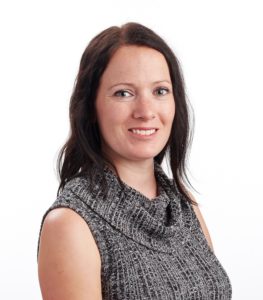Getting a virtual campus tour right
By Sharon Aschaiek | May 25, 2022

COVID-19 has been a game changer in higher education communications, prompting practitioners to rethink their strategies and tactics to promote their institutions and engage with stakeholders.
One impact has been on how universities and colleges provide virtual campus tours. Before the pandemic, the University of Waterloo didn’t offer one. But with public health restrictions dramatically reducing in-person visits, the school’s marcomm folks knew it would be necessary to create one in order to continue attracting undergraduate students.

“We had to do something,” says Pamela Hurvid, campus engagement specialist. “We usually have over 10,000 people come through campus on tours a year. So for that kind of volume to all of a sudden fall off, and not have anything else to offer, that was a definite gap that was identified.”
Hurvid will be sharing about UWaterloo’s full journey of developing an effective virtual tour in a presentation at next week’s 6th Annual Marketing & Communications for Post Secondary Conference in Toronto. Here, she offers a sneak peek into the process and the positive results.
The university’s first effort took place in the summer of 2020, when it used a drone to film the main campus from the outside, and edited the footage into a five-minute video that it made available on YouTube. “Nice for someone to see the campus at a quick glance,” Hurvid says, but not as dynamic or interactive as they would have liked.
The next attempt involved filming a student walking around campus and sharing details about different buildings—from the outside only, due to pandemic restrictions—while someone else answered attendees’ questions via a live chat function. Afterwards, attendees were placed in faculty-specific breakout rooms for a chance to ask professors questions—bit Hurvid says the response was tepid. “People weren’t really wanting to interact,” Hurvid says, “They were just wanting to listen and get information.”
As the saying goes, the third time was the charm. A working group was set up consisting of team members from marketing and undergraduate recruitment who brainstormed ways to create the ideal virtual tour. The ideation process was followed by market research that included reviewing tours at other higher ed institutions to understand best practices.
The technology they chose to use was StreamYard, livestreaming software for creating video content in your web browser and seamlessly broadcasting it on social media platforms. They then hired a video production company to help with filming and editing footage, and trained students to conduct the tours, this time both of indoor and outdoor areas of the main campus, as well as UWaterloo’s satellite locations in Kitchener and Cambridge.
The resulting tour is 45 minutes—determined from research to be an ideal length for this type of content—and is interactive, in that Q&A with participants can happen live on screen. Available since January and taking place every other week over the summer months—registration happens here—the process involves a student guide loading recorded tour stops, and adding additional stops requested by participants. Hurvid notes one advantage of the virtual format over in person: without facing geographic and time barriers, she says, “we can show off spaces from all over, and participants can see a lot more of campus.”
Hurvid says the tour has struck a chord with participants: survey findings show that about 65% are very satisfied and 30% are satisfied—a reversal of previous results.
Looking back on what it took to get to this point, Hurvid says a main challenge was achieving consensus from many different stakeholders from across six faculties, four university colleges and two satellite campuses. As well, using sound technological tools and practices was key, she says, as great video content can easily be marred by, for example, the background noise created by a windy day.
Hurvid encourages other higher ed marcomm professionals to stick with the process until they get it right—even if it takes multiple tries.
“Don’t be don’t be afraid to go back and fix something that isn’t working properly,” she says. “Our second attempt was fine, it was working, but we knew this was going to stay, so we really should put in a lot of thought, effort and resources to make sure that what we use going forward is the best we can make it.”